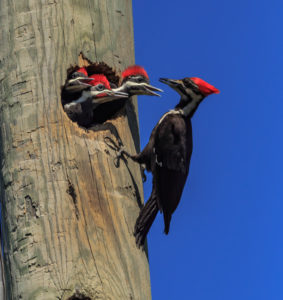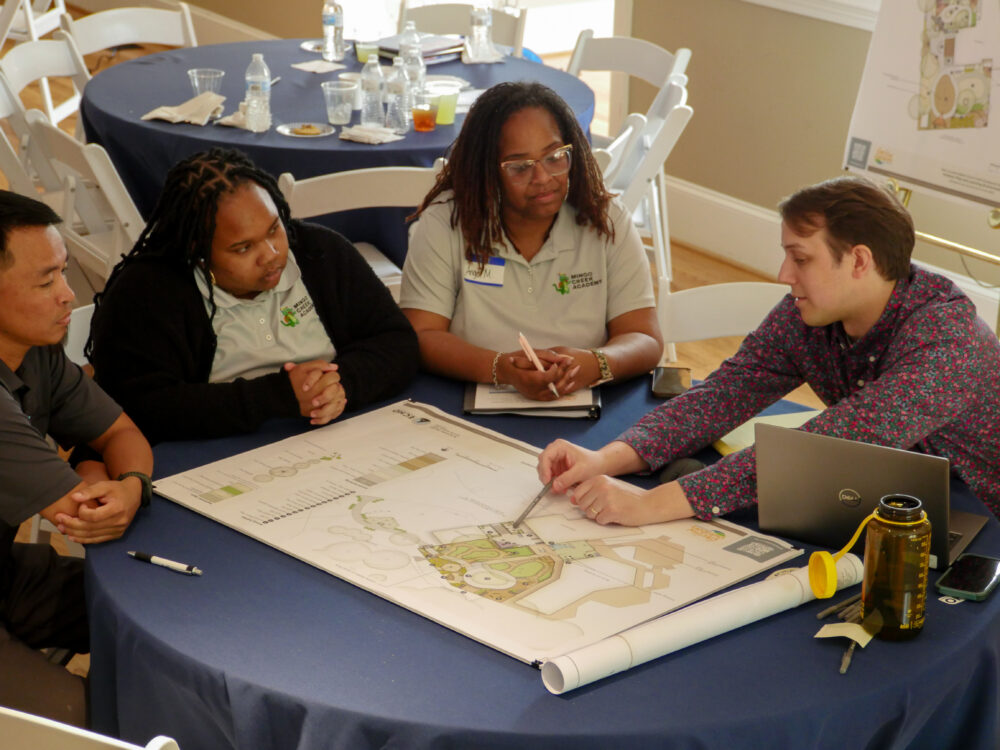We have much more to do and your continued support is needed now more than ever.
Last Strike for Bird Strikes
UPDATE JULY 2021: In response to large numbers of sick and dying birds in states east of the Mississippi River, natural resource agencies recommend ceasing bird feeding to reduce bird mortality and the possible spread of disease.
UPDATE AUGUST 2021: The mysterious bird deaths reported in parts of the Mid-Atlantic, Midwest and South have begun to subside with no significant loss to bird populations overall. While scientists haven’t identified what caused this mortality event, there seems to be a correlation with the emergence of Brood X periodical cicadas. It should be safe to put out bird feeders and baths again.
Across nearly all habitats, birds support biodiversity and ecosystem resilience through pest control, pollination, and seed dispersal. Sadly in the United States alone, one billion birds die due to glass collisions annually.

Birds striking windows, or “bird strikes,” occur because birds can’t recognize glass as an obstacle, as they only see reflections of the sky or surrounding landscape, and attempt to fly through these glass windows.
Though bird strike mortality can be preventable, it continues to be an issue as we continue to convert natural habitats into homes and other buildings. Urban communities have unique opportunities to address this issue, and many cities across the United States are starting to thoughtfully incorporate bird-friendly protections into city governance and community outreach to raise awareness and expand local capacity.
Here are four ways that you or your community can help reduce bird strikes:
1. Implement and Support Bird-Friendly Design Policies
New York City has passed Initiative 1482B, which is the nation’s most expansive bird-friendly building policy in the United States. This legislation now requires that the first 75 feet of new buildings must be 90 percent constructed from bird-safe materials.
Additionally, the policy requires glass to be treated with glazings and panels that minimize reflections, to make it less likely for birds to fly into them. It interweaves cost-effective sustainable building strategies that can reduce heating costs and energy usage, such as green roofs, with glass designs that can curb bird population declines.
Such implementations have already proven successful. The Jacob K. Javits Convention Center, previously named NYC’s top bird-killing building, reduced bird deaths by 90 percent after incorporating glass patterns that were more easily identifiable by birds.
The American Bird Conservancy has created a Bird-Friendly Building Design guide, which includes a model ordinance that any other local or city government can use to implement bird-friendly building designs in their communities. This tool provides legislators and community members with the expertise needed to draft common-sense building regulations that can help combat bird population declines.
2. Create Bird Sanctuaries and Promote Environmental Awareness
Through the U.S. Fish and Wildlife Service’s Urban Bird Treaty program, the city of Portland, Oregon, is retrofitting its current environmental education programs to better educate children and citizens about bird conservation. The local government is also helping sustain bird sanctuaries across the city by conserving and enhancing green spaces, wildlife habitats, and local parks.
This focus on habitat restoration, hazard reduction, pest management, and education showcases the multifaceted approaches cities and communities can take to address the long-standing need for bird conservation. The Portland model is especially impactful because the city prioritized efforts to engage citizens, build capacity, and raise awareness about bird conservation.
3. Protect Birds at Home
About half of all bird strikes are the result of home windows. The American Bird Conservancy has made a resource with six quick and affordable ways to protect birds at home.

Simple techniques include using non-toxic, rain-resistant tempera paint on glass windows in any shape or pattern you desire. You can also use translucent ABC tape, which lasts longer outdoors. Even using netting or decals on windows will signal to birds that the glass is an obstacle. All of these options are non-permanent and flexible to your needs.
4. Support National and Local Efforts through Advocacy
Be an advocate for policy change in your community and on the national level!
To support federal efforts on this issue, sign the petition to show your support for the federal Bird-Safe Buildings Act here. This bipartisan bill requires that all public buildings constructed, acquired, or altered by the General Services Administration use building materials and designs that are safe for bird populations.
Through the nationwide Lights Out program, cities like Philadelphia are working with local agencies and conservation organizations to encourage tenants in building complexes to turn off lights during bird migration seasons to help save birds, energy, and money.
By preventing indoor lighting from spreading outdoors, or “light pollution” we can prevent the reproductive damages that light pollution causes. Studies have shown that light pollution can cause birds to begin nesting a month earlier in open environments and up to 18 days in forested environments. This altered timing impacts the success rate of nests and has been found to impact 142 different types of bird species across North America.
The amount of light a building emits is a key predictor of bird collisions. In Texas, a state located along the Central Flyaway, the National Wildlife Federation’s Texas affiliate, Texas Conservation Alliance (TCA), is co-leading a statewide effort to reduce light pollution and protect the two billion birds that pass through Texas. The Lights Out Texas initiative will encourage Texans to dim non-essential light during summer and fall migration.
Reach out to your community’s elected leaders and encourage them to support programs like Lights Out.
Strategies for improving wildlife habitats in urban environments are constantly developing and improving. The need for individual action and expansive legislation is only growing during this time of rapid species decline, however, there are actionable steps we can take.
For more resources on how to create wildlife habitats at home or in your community check out Garden for Wildlife.
Learn more about the Community Wildlife Habitat, Mayors’ Monarch Pledge, and Sacred Grounds programs for ways to get involved in community-driven conservation. Work with your local schools through Eco-Schools USA and Schoolyard Habitats programs, and support wild birds at home!






















